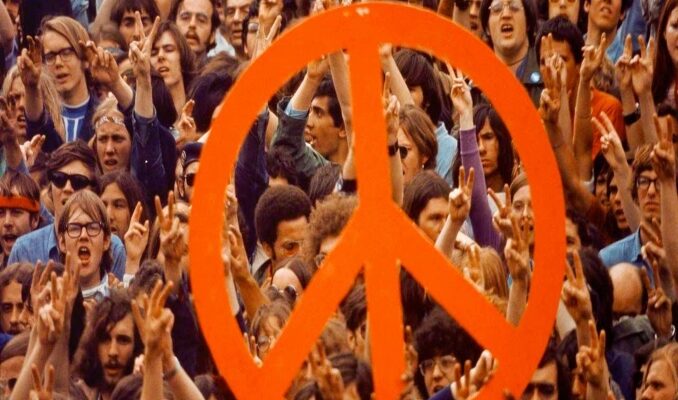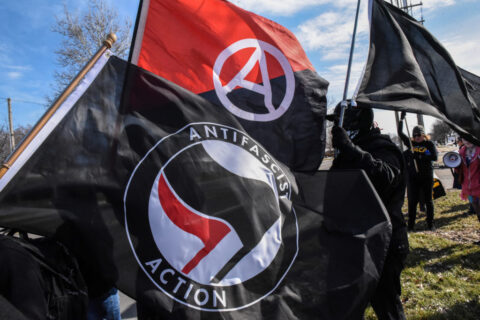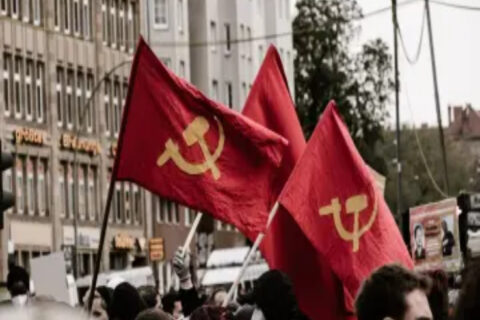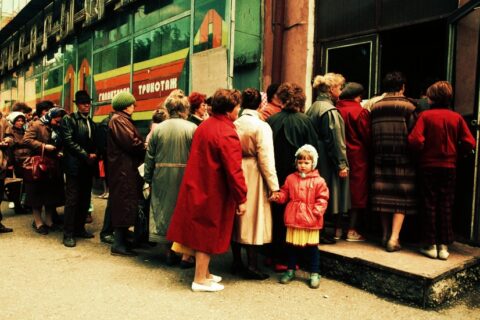Many of you still alive may remember the “peace” movement of the late 1960s and early 70s. It was not really a peace movement but was a subversive movement promoting victory for the Viet Cong and defeat for the United States in a war we should never have been involved in anyway.
I can recall being on a college campus during that war and seeing boxes of “peace” movement material that had been shipped to someone on that campus. Much of the material in those boxes had been printed in North Vietnam, the country we were supposedly at war with. I recall thinking at the time: “If they have shipped all this material to this little college here, how much have they shipped to Columbia or Berkeley?
And I recall seeing, during the Kent State debacle, college professors out on college greens teaching their students how to riot and protest. And they must have done a good job because those kids sure rioted and protested. The only place I ever saw a copy of Mao’s Little Red Book was on that college campus.
After reading some of the material supplied by the “peace” movement, I was forced to admit that the so-called peace movement was a subversive organization not really interested in real peace but only in the communist version of “peace” which really amounted to “no resistance to communism.” I found out later that the leadership of the peace movement was often not seen rioting in the streets but was actually sitting in capitalist boardrooms busily hiring out the denizens of the peace movement to make lots of radical fuss for various reasons. Even some of the peace movement people admitted that much. If you can still find one, get a copy of a book called The Strawberry Statement–Notes of a College Revolutionary. The author of that book says the radicals got Rockefeller money to act up for various reasons. I’ve written about that in the past.
But are “peace” movements something new with the 20th century? Not really. You had them in the 1800s as well. Researcher Arthur R. Thompson has noted in his To the Victor go the Myths and Monuments that:
“William Ellery Channing was looked upon as the ‘bishop’ of Transcendentalism by Transcendentalists such as Ralph Waldo Emerson. It was in Channing’s home that the Massachusetts Peace Society was organized. This led to the American Peace Society organized by William Ladd of Maine. Founded in New York City, the American Peace Society promoted a world ‘Congress with a High Court of Nations’ to avert war. It was formed from 50 local groups from New York, Massachusetts, New Hampshire, Maine and Pennsylvania that coalesced into the society. It was originally headquartered in Hartford, but soon moved to Boston. It had the same international goals as the Illuminati and what became the United Nations. Its organ was World Affairs, and remains so today. All of this is reminiscent of the modern Council on Foreign Relations and its organ Foreign Affairs. …As usual, the leadership of the Peace Society split and formed other organizations more radical, which made the original look less radical and more moderate. In 1838, William Lloyd Garrison, abolitionist, John Humphrey Noyes, socialist; Adin Ballou, and Bronson Alcott, father of Louisa May Alcott, formed a new organization, the New England Non-Resistance Society. Then in 1866, the Universal Peace Union was formed out of it as well… It was astonishing that people did not notice that many of the peace leaders were also the leaders in spiritualism. Just as the Carbonari propagated their organization posing as a Bible Society in Europe, the conspiracy in America used Christian arguments to build a movement wherein the rank and file had no clue where they were being led…The arguments for the desire of peace were sound, but the solution was something that no student of the horrors of big government could abide: world government and the power that would be accumulated in it, becoming at the minimum a corrupt institution with no recourse left for decent people to stand up to it…The American Peace Society is also an example of the leaders stating that they want peace, but when it came to the Civil War, they endorsed the conflict on the side of the ‘Federals.’ It was, after all, a just war, since the North was fighting against the slave power. There were leaders who did not hold this position, but they had little standing in the face of the war fever.”
In closing, Mr. Thompson noted that: “It is amazing how often peace leaders of the socialist persuasion over the last two hundred years have endorsed war if it furthers the socialist agenda.” Something we might think about in our day. Peace movements usually favor a socialist or communist agenda; hence they are not really movements promoting true peace but are rather movements that benefit some radical leftist agenda.
-By Al Benson Jr.

O I’m a good old rebel, now that’s just what I am. For this “fair land of freedom” I do not care at all. I’m glad I fit against it, I only wish we’d won, And I don’t want no pardon for anything I done.





